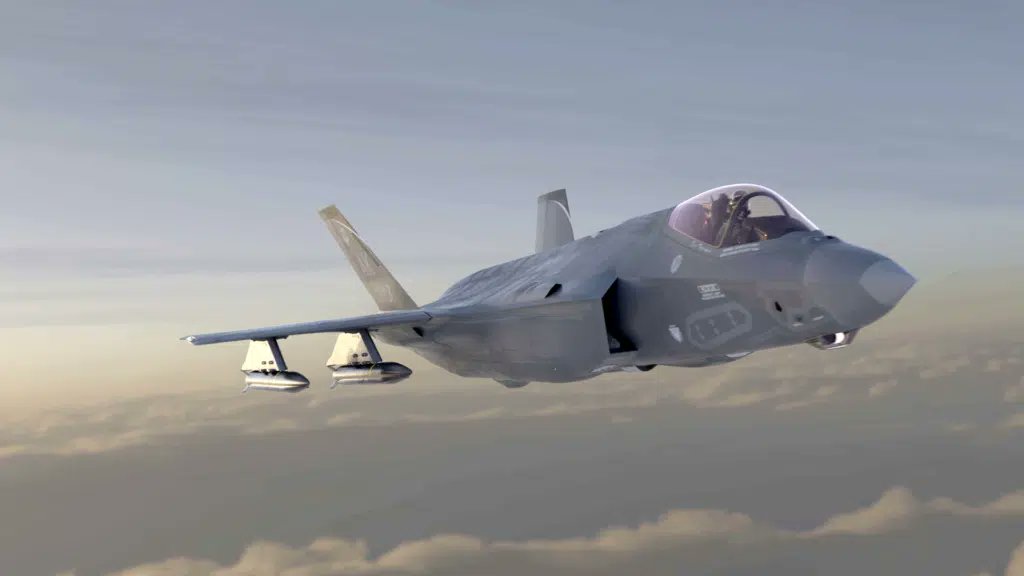Lockheed Martin, in collaboration with defense company CoAspire, revealed a new weapon at this week’s Sea Air Space 2024 exposition: the new Mako multi-mission hypersonic missile.
The name “Mako” is derived from the fastest shark in the sea. Developed initially with internal funding for the US Air Force Stand-In Attack Weapon (SiAW) program, the cutting-edge weapon is now being proposed to the US Navy for integration with carrier-based aircraft.
Rick Loy, Senior Program Manager at Lockheed Martin’s Missile and Fire Control division, disclosed in an interview with Naval News that the Mako missile presents a paradigm shift in military capabilities.
Loy highlighted the system’s versatility, survivability, and affordability, describing it as a “multi-mission, highly capable system.” It is capable of holding numerous targets at risk with a single weapons system and is ready for deployment.
This unveiling marks the first public display of the Mako hypersonic missile since its development commenced seven years ago. Lockheed Martin asserts that the missile boasts compatibility with a wide array of aircraft.

This includes the F-35, F-22, F-15, F-16, F/A-18, P-8, and any aircraft equipped with 30-inch lugs, such as the widely utilized BRU-32 heavy-duty ejector rack.
At the CoAspire booth, a mockup of the Mako missile was showcased alongside graphics illustrating its integration with the F-35 Lightning II.
Loy further suggested that Mako could potentially be launched from surface, ground, or even sub-surface, indicating its versatility beyond aircraft as a potential launch platform.
The company representative also expressed the intention to cater to global interest in acquiring hypersonic capability, indicating a willingness to provide such technology to customers beyond the United States.
Despite the buzz surrounding the Mako missile, details remain shrouded in secrecy, as Lockheed Martin refrained from disclosing specific information.
Lockheed Martin has, however, hinted at multiple guidance methods and a top speed exceeding Mach 5 for the Mako missile. Loy confirmed that extensive fit-checking has been conducted electronically and physically on various fighter jets and maritime patrol aircraft.
Significance Of Mako Hypersonic Missile
Defense expert Stefano D’Urso pointed out, “The new hypersonic missile is being publicly displayed for the first time since the development began. The F-35 can carry four Mako missiles externally and two internally, one for each weapon bay, making it the first hypersonic weapon compatible with the 5th gen aircraft.”
D’Urso’s observation illuminates a crucial aspect of Mako’s design: None of the current hypersonic weapons in development are small enough to fit in the F-35’s weapon bays.
Besides, the Lockheed Martin Hypersonic Air-breathing Weapon Concept stands out as the sole option capable of external carriage.
Meanwhile, specific details behind Lockheed Martin’s decision to partner with CoAspire on Mako were not outlined explicitly. However, CoAspire’s website sheds some light on the matter.
According to their website, CoAspire offers a hypersonic missile solution that has gained acceptance from the US Navy and has been placed in an Other Transaction Opportunity (OTA) basket—a contract mechanism that allows the Navy to consider potential future funding.

Moreover, CoAspire mentions that its solution builds upon previous work conducted by a major defense company. This suggests that the partnership between Lockheed Martin and CoAspire for Mako could leverage Boeing’s existing technology and expertise in hypersonic missiles. However, whether the US Navy would be interested in acquiring this missile remains uncertain.
Nonetheless, if Mako is acquired, having a hypersonic weapon that can be carried internally would significantly enhance the F-35’s capabilities.
Given Russia and China’s advances in developing, testing, and deploying hypersonic technology, surpassing the US in this realm, it is increasingly crucial for the US to accelerate its efforts to catch up with these nations in the development of hypersonic weapons, which travel at speeds five times that of sound.
Further, the US military has encountered numerous setbacks in its endeavors to develop and test hypersonic weapons. Defense experts have been emphasizing the urgent need to enhance the USA’s testing capabilities to bridge this gap and maintain strategic parity.
Yet, Pentagon officials have publicly countered the notion that the U.S. has “fallen behind,” highlighting that many of the country’s ballistic missiles and a significant portion of its extensive nuclear arsenal already operate at hypersonic speeds.
Even if the US Navy expresses interest in acquiring the Mako multi-mission hypersonic missile, the actual timeline for its full development and deployment remains uncertain.
- Contact the author at ashishmichel(at)gmail.com
- Follow EurAsian Times on Google News




